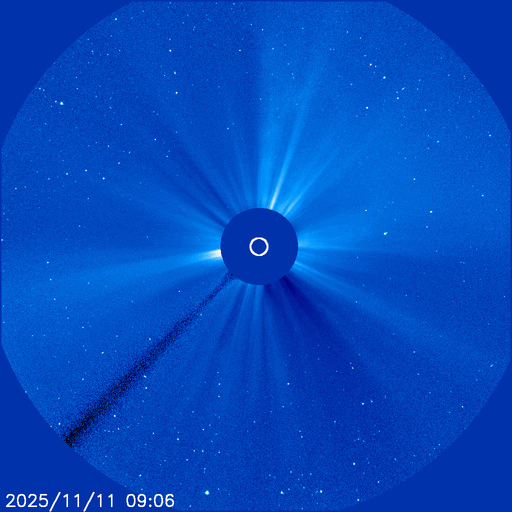Overnight there were two successive arrivals from coronal mass ejections (CMEs) that left the Sun on 9th and 10th November, both associated with X-class solar flares. This has led to a significant enhancement in geomagnetic activity, with global activity reaching G4 on the NOAA geomagnetic storm scale. Locally in the UK activity reached G5 (K=9) overnight, and the largest induced geoelectric field to be recorded in the UK since 2012, when BGS records began.
We are still anticipating the arrival of another full halo CME that was associated with an X5 class solar flare on 11th November. This is expected to arrive this afternoon (12th November) and is likely to further disturb the geomagnetic field. It is possible that this will lead to a significant storm of similar magnitude to the geomagnetic storm of May 2024, which reached the maximum level of G5 on the NOAA geomagnetic storm scales, and led to aurora sightings across southern Europe.
Assuming clear dark skies, there is an increased chance of seeing the aurora from tonight and over the next couple of days. Those in Scotland, northern England and Northern Ireland have the best chance if the weather is favourable.
Sign-up to receive Geomagnetic Storm Forecast emails.
Follow us on Twitter:
Follow @BGSauroraAlert for more occasional aurora alerts.
Follow @BGSspaceWeather for daily space weather forecasts.
Glossary
- BGS
- The British Geological Survey is a geoscience research centre that is part of UK Research and Innovation (UKRI) and affiliated to the Natural Environment Research Council (NERC).
- CME or Coronal Mass Ejection
- The eruption of a portion of the outer atmosphere of the Sun into space, caused by rapid changes in its magnetic field. Often occurs along with a solar flare.
- Solar Flare
- Energy released by the explosive reorganisation of magnetic fields within the Sun's atmosphere.
- Solar Wind
- The ever-present expansion of the Sun’s hot outer atmosphere into the solar system, which carries space weather within it.
- Solar Flare
- Energy released by the explosive reorganisation of magnetic fields within the Sun's atmosphere.
- Sunspot/Active Region
- A region of intense magnetic field in the Sun's visible outer atmosphere often associated with flares and CMEs.



